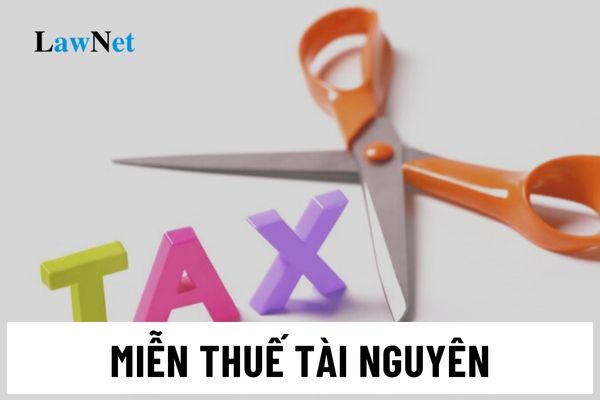What types of land are subject to severance tax exemption in Vietnam?
What types of land are subject to severance tax exemption in Vietnam?
According to Article 10 of Circular 152/2015/TT-BTC, the tax exemption cases include:
Severance tax exemption
The cases of exemption from severance tax are specified in Article 9 of the Law on severance tax and Article 6 of Decree No. 50/2010/ND-CP, including:
1. Entities extracting natural marine organisms.
2. Entities extracting branches, firewood, bamboo, rattan, etc. serving everyday life.
3. Entities extracting natural water for hydroelectricity generation serving everyday life of households and individuals.
4. Natural water extracted by households and individuals serving their everyday life.
5. Land areas given/leased out to organizations and individuals and used on the spot; earth used for leveling, construction of security, military works, dykes.
Earth extracted and used on the spot eligible for tax exemption include sand, rock, gravel in the earth without specific substances and is used as is for leveling or construction. If earth is transport elsewhere for use or for sale, severance tax must be paid as prescribed.
6. The Ministry of Finance shall cooperate with relevant Ministries and agencies in proposing other cases of exemption from severance tax to the government, which will be considered and decided by Standing Committee of the National Assembly.
The types of land subject to severance tax exemption include :
+ land areas given/leased out to organizations and individuals and used on the spot;
+ earth used for leveling, construction of security, military works, dykes.

What types of land are subject to severance tax exemption in Vietnam? (Image from the Internet)
What is the severance tax rate applicable to land in Vietnam?
Under the severance tax tariff issued together with Resolution 1084/2015/UBTVQH13, the tax rates applicable to types of land are as follows:
| No. | Type of Resource | Tax Rate (%) |
|---|---|---|
| 1 | Land exploited for land filling and construction | 7 |
| 2 | Clay Used in Brick Production | 15 |
| 3 | Refractory clay | 13 |
| 4 | Kaolin | 13 |
Who is responsible for paying the severance tax for resource-extracting enterprises in Vietnam?
According to Article 3 of the Law on severance tax 2009 as amended by Clause 2, Article 67 of the Petroleum Law 2022, the following stipulations apply:
Severance tax payers
1. Payers of severance tax are resource-extracting organizations and individuals subject to severance taxation, except for exploitation of oil and gas fields, groups of oil fields and blocks according to the regulations of law on petroleum.
2. In some cases, severance tax payers shall be defined as follows:
a/ For a mining enterprise established on the basis of joint venture, the joint-venture enterprise shall pay severance tax:
b/ For Vietnamese and foreign parties to a business cooperation contract to exploit natural resources, the parties' liability to pay severance tax must be specified in such contract:
c/ In case an exploiter conducts small-scale exploitation of natural resources and sells them to a principal purchaser that has a written commitment or an approval to declare and pay severance tax on the exploiter's behalf, the principal purchaser shall pay severance tax.
The payers of severance tax are resource-extracting organizations and individuals subject to severance taxation, except for exploitation of oil and gas fields, groups of oil fields and blocks according to the regulations of law on petroleum.
What are the regulations on the taxable extraction quantity for land in Vietnam?
According to Article 5 of the Law on severance tax 2009, the taxable extraction quantity for land is regulated as follows:
- For an exploited natural resource the quantity, weight or volume of which can be determined, the taxable extraction quantity is the quantity, weight or volume of natural resource actually exploited in a severance tax period.
- For an exploited natural resource the quantity, weight or volume of which cannot be determined because this natural resource contains different substances and impurities, the taxable extraction quantity shall be determined based on the quantity, weight or volume of each substance obtained from sorting and classification.
- For natural resources which are not sold but used for turning out other products, if their actually exploited quantity, weight or volume cannot be directly determined, the taxable extraction quantity shall be determined based on the output of products turned out in a severance tax period and the use norm of natural resource per unit of product.
- For natural resources exploited on a manual, scattered or mobile, irregular basis, if the planned output of exploited natural resources in a year is valued at under VNI) 200 million, a fixed output of exploited natural resources may be determined on a regular or seasonal basis for severance tax calculation.
Tax authorities shall coordinate with local concerned agencies in determining the fixed output of exploited natural resources for severance tax calculation.

